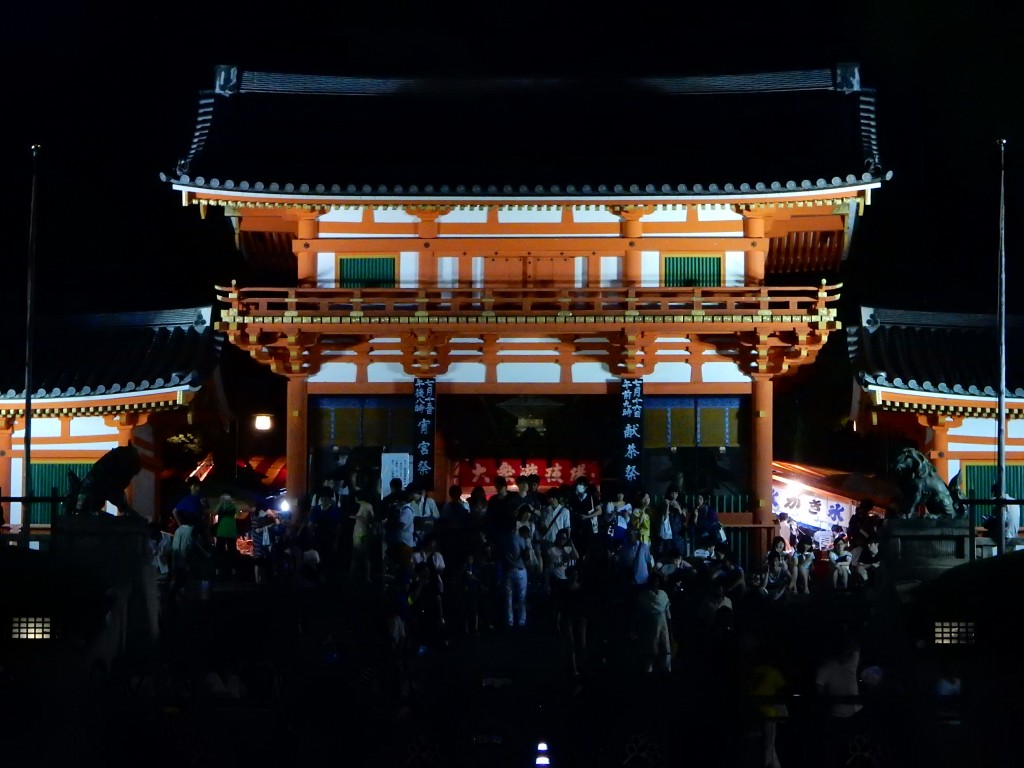
The West Gate (Nishi Romon) of Yasaka Jinja, the host shrine of Kyoto’s Gion Matsuri, is filled with people coming and going
Two nights before the big Gion Matsuri parade, and the streets of Kyoto are packed with excited visitors. Most are wandering around visiting the floats, viewing the treasures on display, watching the entertainment, looking at the attractive yukata, and eating the snacks on offer from a myriad stores.
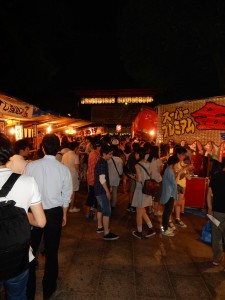
Inside the entrance gate, stalls line the way into the shrine compound
Meanwhile, at Yasaka Jinja this evening took place the spiritual essence of the festival. It consists of the removal of the ‘spirit-bodies’ (goshintai) of the three kami from the sanctuary and into portable shrines. The kami in question are Susanoo no mikoto, the storm god, together with his wife and their children. For a whole week, from the 17th to the 24th, they will be in downtown Kyoto in their ‘resting place’ (otabisho) in Shijo Street.
The removal ceremony began at 8.00 in the evening, with a large crowd gathered around three sides of the inner compound. The three mikoshi were placed in the Dance Stage that dominates the centre. For twenty minutes nothing seemed to happen, as piped gagaku music was played from speakers and placards circulated stating that photography was not allowed.
At 8.20 all the lights in the compound went off, and the shrine was plunged into darkness. ‘It’s been a while since I saw the stars,’ a Japanese man whispered to his wife. Then from out of the Worship Hall came some eight or nine priests dressed in white, barely visible in the dark except for a torch shining downwards to ensure they could see the way. As they proceeded towards the mikoshi one of the priests made an eerie noise to signify the presence of the spirits (a shamanic legacy).
At the head of the small procession a priest waved a haraigushi to purify the way. Behind him others held up a white protective sheet to shield from view the boxes containing the ‘spirit-bodies’. The small procession then mounted into the Dance Hall to place the spirit-bodies within the mikoshi. The priests then returned into the Worship Hall and disappeared from view.
At 8.30 the lights went back on again and the ceremony was over. To my surprise, given the spiritual nature of the occasion, there were a lot of foreigners present, especially Chinese. Reactions of the Japanese were quite mixed; a middle-aged man near me stood very devoutly with hands together throughout the ceremony. Others chatted and used their phones quite unconcerned. One young girl near me asked her boyfriend, ‘Is it Buddhist?’, to which he replied, ‘I don’t know. I’ll ask my grandmother, she’ll know.’ I guess you could call that an interesting case of the transmission of tradition!
*******************************************************
For a talk about the history of the Festival and the significance of the 2014 Matsuri, see here. For the first of nine articles about the Gion Matsuri, click here. For more about the floats, click here. For a list of events and the order of floats, click here.
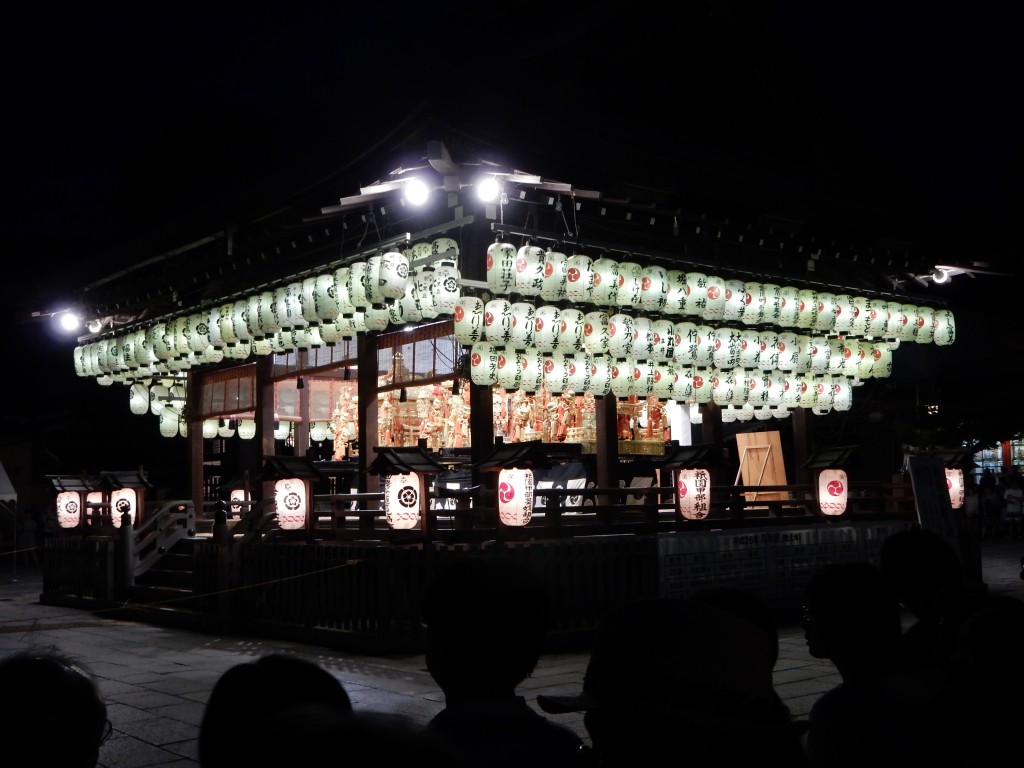
Three mikoshi (portable shrines) stand within the Dance Stage (buden), lined with a triple row of paper lanterns which were turned off during the removal ceremony.
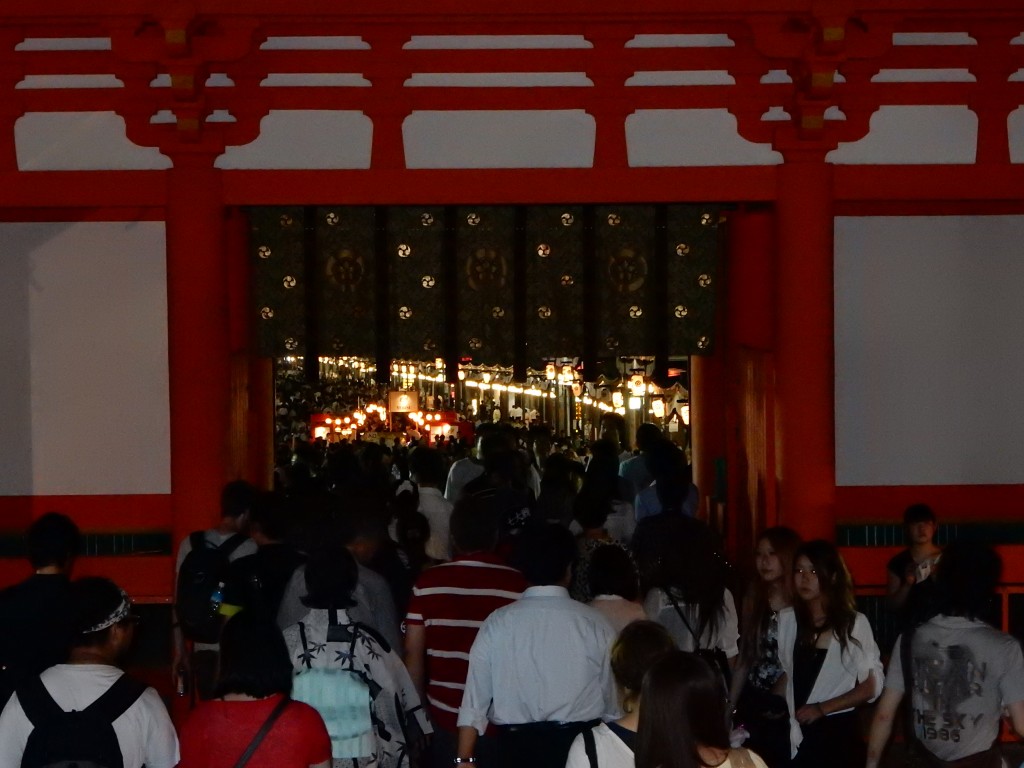
After the ceremony festival-goers stream back out through the West Gate and into Gion
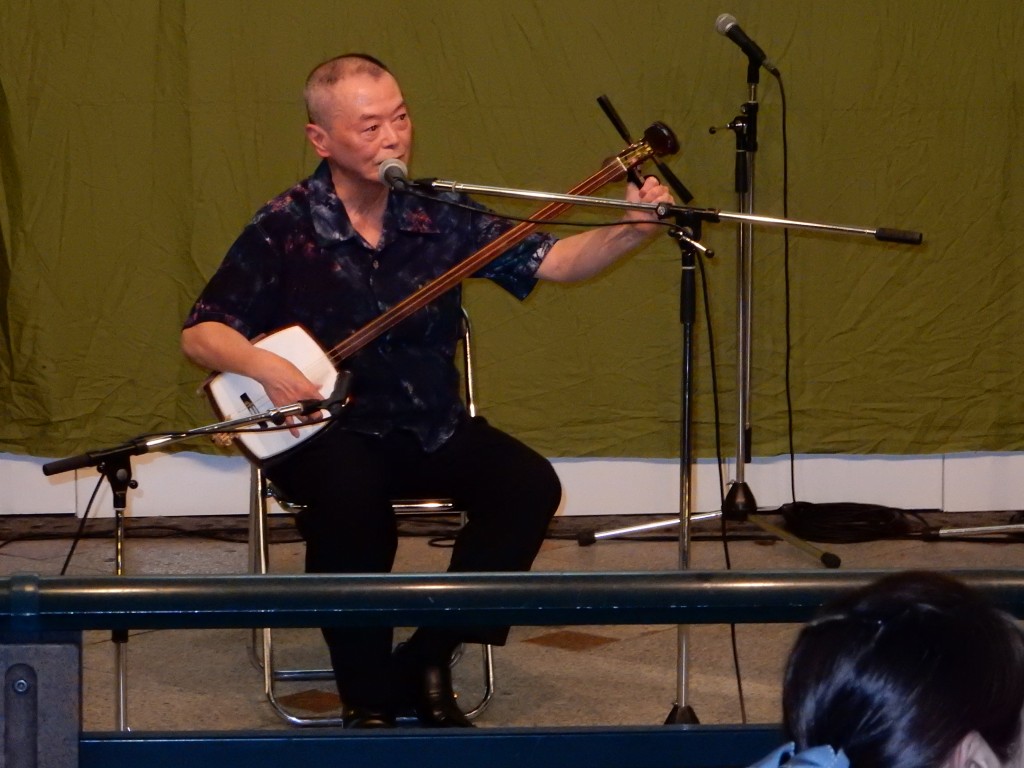
Right in front of the shrine there was shamisen entertainment…
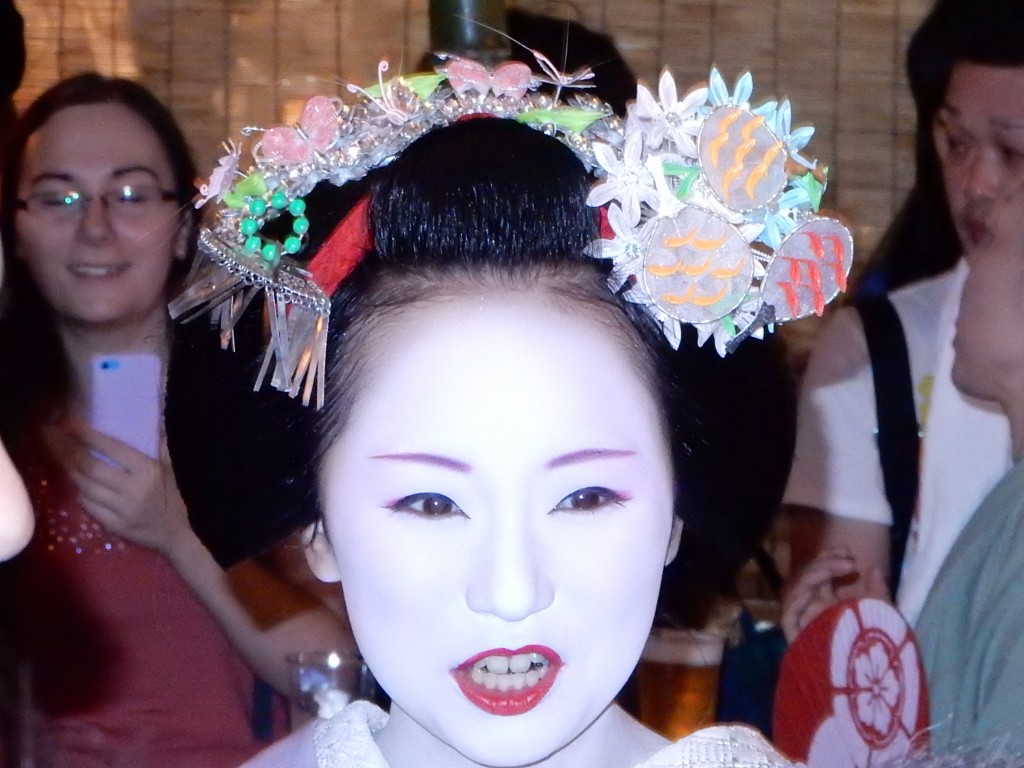
… and maiko were serving beer, a reminder how the spiritual and the secular have always gone hand-in-hand in Japan

In the light of day the next morning, the three mikoshi look resplendent. They’ll stay here a couple of days before being taken to their ‘otabisho’ on July 17
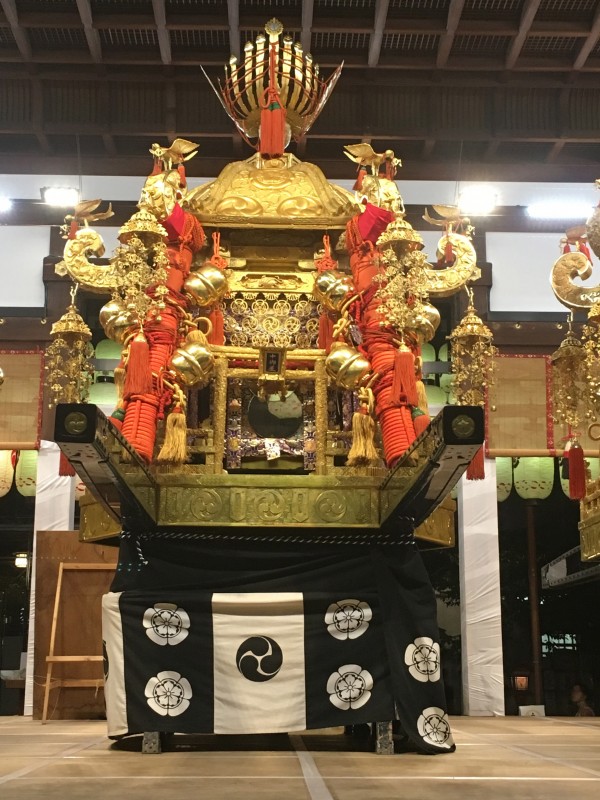
A divine container for a divine spirit, the gold of the mikoshi considered to have a purifying effect and the round mirror a shining device for keeping away evil spirits

That’s a very scary looking maiko!